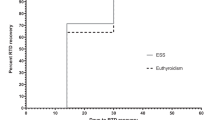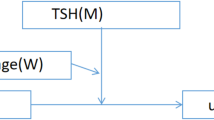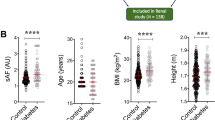Abstract
ABSTRACT: A family comprising mother, father, and five children is described. Four of the children were found to excrete massive amounts of D(+)-glyceric acid in their urine. This was verified by gas chromatography-mass spectrometry and the configuration determined by capillary gas chromatography of O-acetylated menthyl esters. The excretion ranged from 10.8 to 19.9 mmol/24 h. The remaining child and the parents showed no evidence of this unusual metabolite. The virtual absence of clinical manifestations in this family was particularly interesting. Only two of the children showed any clinical abnormality and this was limited to mild microcephaly and speech delay; the other two children found to excrete large amounts of D(+)- glycerate were healthy and developmentally normal at 7 y and 9 y of age. There was a marked increase in the excretion rate of D(+)-glycerate in response to both oral fructose and serine loading. These results are consistent with a deficiency of D(+)-glycerate kinase and indicate the potentially benign nature of this disorder.
Similar content being viewed by others
Log in or create a free account to read this content
Gain free access to this article, as well as selected content from this journal and more on nature.com
or
Author information
Authors and Affiliations
Rights and permissions
About this article
Cite this article
Bonham, J., Stephenson, T., Carpenter, K. et al. D(+)-Glyceric Aciduria: Etiology and Clinical Consequences. Pediatr Res 28, 38–39 (1990). https://doi.org/10.1203/00006450-199007000-00009
Received:
Accepted:
Issue date:
DOI: https://doi.org/10.1203/00006450-199007000-00009
This article is cited by
-
Severe infantile epileptic encephalopathy associated with D-glyceric aciduria: report of a novel case and review
Metabolic Brain Disease (2019)
-
D‐Glyceric aciduria: new development
Journal of Inherited Metabolic Disease (1992)
-
d‐Glyceric acidaemia: clinical report and biochemical studies in a patient
Journal of Inherited Metabolic Disease (1991)



